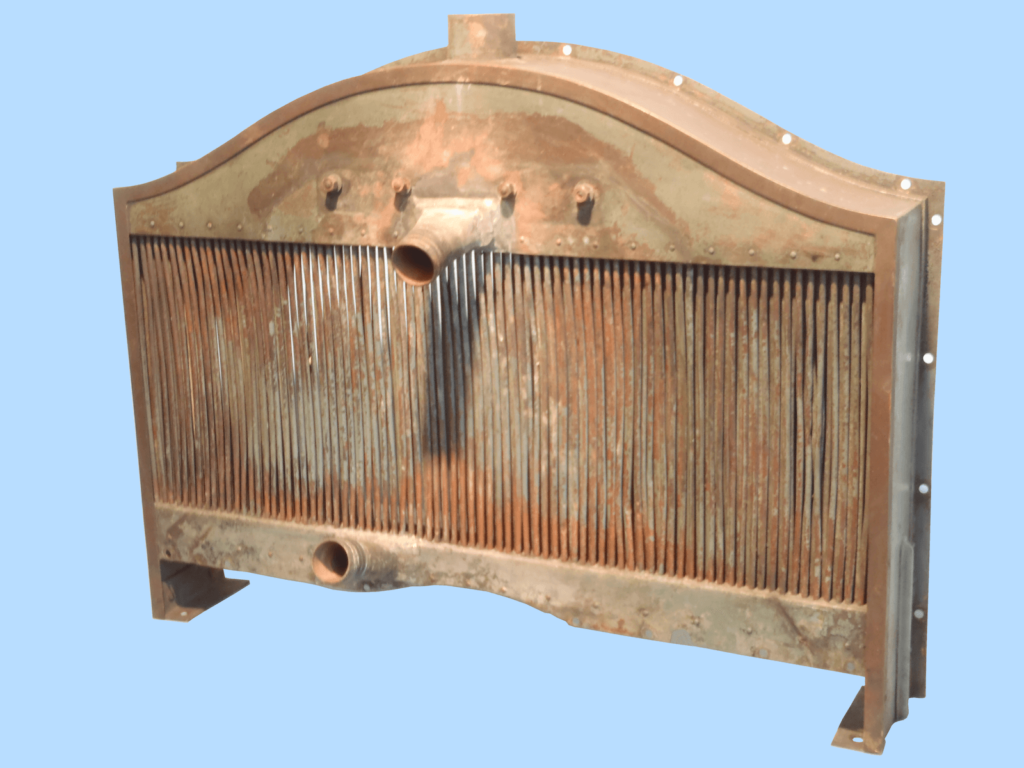We were brought a 1910 Veteran Renault AX radiator by a couple from West Sussex who informed us that their radiator was internally blocked and had some coolant leaks. They asked that we clean out the inside of the radiator and repair the external leaks, but requested that we did so with the minimum of external cleaning. They believed that the rustic appearance of the radiator added character to the vehicle and was in keeping with the rest of the car.
The AX radiator is odd in the fact that it sits at the back of the engine with the hose outlets facing forward towards the cylinder block. The radiator core has no fins but is made up of dozens of individual copper tubes soldered into a top and bottom header plates that are attached to brass water tanks.
We chemically cleaned the inside of the radiator and restored the water flow through the core. Several of the tube to tube plate joints were leaking and we needed to resolder them. There were also leaks on the header plate to water tank joints and the hose fittings that we needed to repair. These were repaired and the unit was prepared for testing. In normal working conditions, the radiator operates with little or no system pressure but for testing purposes, we introduced a low pressure and tested the radiator submerged under water.
The test proved OK and we finished off giving the radiator a minimum exterior wash to remove our soldering flux and salts.
Here is an AX construction showing the position and fitting of the radiator.
This is what Wikipedia has to say about the AX:
The Renault AX was an automobile manufactured by Renault. It was produced between 1908 to 1914 and was mostly used by cab drivers. The AX had a 2-cylinders straight engine with a displacement of 1,060 cc and a power of 8 kW. Its maximum speed was 34 mph (55 km/h). The vehicle weighed 750 kg.


